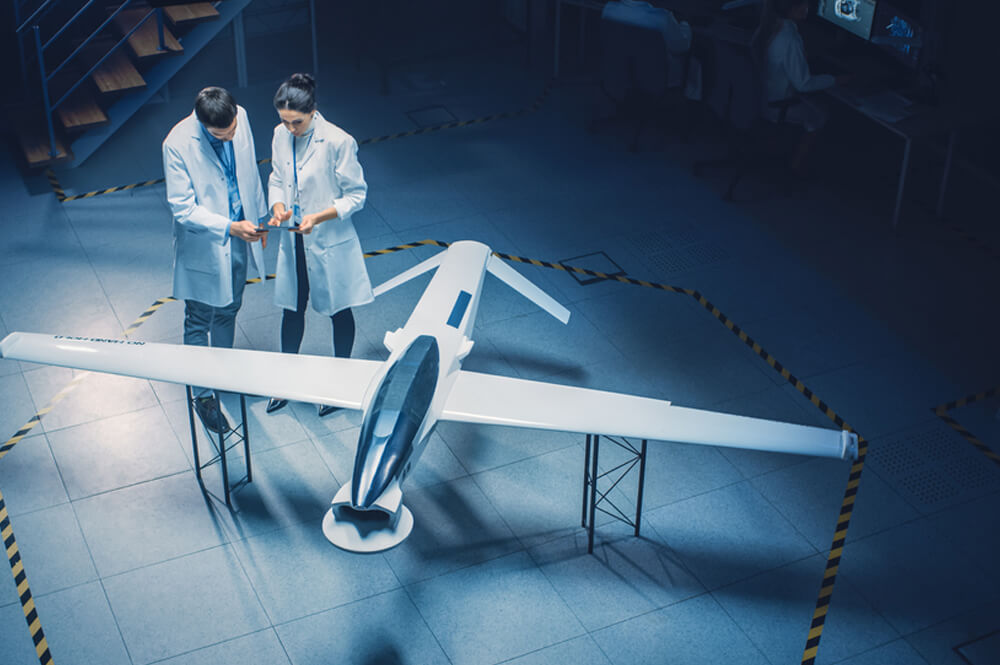In recent years, the integration of AI in supersonic aircraft design has opened up new vistas in aviation technology. As the world becomes increasingly interconnected, the demand for faster and more efficient air travel has accelerated. Enter the era of artificial intelligence, where it is playing a pivotal role in revolutionizing the design and functionality of supersonic aircraft.

The Evolution of Supersonic Aircraft
Supersonic aircraft have long been a dream for aerospace engineers and enthusiasts alike. The ability to travel faster than the speed of sound presents numerous advantages, including reduced travel time and increased efficiency. However, designing such aircraft poses significant challenges, including issues related to aerodynamics, noise pollution, and fuel efficiency.
Introducing AI into the Design Process
The integration of AI into the design process has transformed how engineers approach these challenges. With the ability to analyze vast amounts of data quickly, AI offers insights that were previously unattainable.
Data-Driven Design
AI algorithms can process and analyze complex datasets, leading to more informed design decisions. This data-driven approach allows engineers to optimize aerodynamic profiles and enhance fuel efficiency.
Improving Aerodynamics
One of the main challenges in supersonic aircraft design is minimizing drag. AI plays a critical role in testing and refining aerodynamic shapes to ensure minimal resistance during flight.
Noise Reduction Techniques
Supersonic travel is often associated with the infamous sonic boom. However, AI-driven models are being developed to predict and reduce noise levels, making supersonic aircraft more viable for commercial use.
AI in Structural Design
Structural integrity is vital for any aircraft, especially those traveling at supersonic speeds. AI assists in predicting stress points and potential fatigue, ensuring that materials used can withstand the demands of high-speed travel.
Material Selection
AI helps in selecting the most suitable materials by analyzing their properties and performance under various conditions. This ensures that the aircraft is both lightweight and durable.
Structural Fatigue Prediction
To prevent unexpected failures, AI systems predict structural fatigue and suggest maintenance schedules, thereby enhancing safety and reliability.
AI in Cabin Design and Passenger Comfort
Passenger comfort is a crucial aspect of modern aviation. AI aids in designing cabins that optimize space and enhance the overall travel experience.
Environment Monitoring
AI systems continuously monitor cabin conditions, adjusting temperature, lighting, and air quality to ensure a comfortable environment for passengers. Discover more about AI in cabin environment monitoring.
Passenger Experience
By analyzing passenger feedback, AI systems can personalize services and improve in-flight entertainment, making long flights more enjoyable.
AI in Manufacturing and Maintenance
AI not only influences the design of supersonic aircraft but also enhances manufacturing and maintenance processes.
Production Efficiency
AI-driven automation streamlines manufacturing processes, reducing production time and costs while maintaining high-quality standards.
Predictive Maintenance
AI systems predict maintenance needs, allowing for timely repairs and minimizing downtime. This ensures that aircraft remain in optimal condition, ready for service.
AI in Flight Testing and Simulation
Before a supersonic aircraft takes to the skies, it undergoes rigorous testing. AI facilitates this process through advanced simulations.
Real-Time Simulations
AI-driven simulations provide real-time feedback, allowing engineers to test various scenarios and optimize performance. Learn more about AI in real-time aerospace simulations.
Flight Trajectory Analysis
AI analyzes flight trajectories to ensure that aircraft follow the most efficient and safe paths, reducing fuel consumption and travel time.
The Future of Supersonic Travel
With AI at the forefront of supersonic aircraft design, the future of aviation looks promising. As technology continues to advance, we can expect faster, safer, and more efficient air travel.
Challenges Ahead
Despite the advancements, challenges remain, including regulatory hurdles and environmental concerns. However, with AI’s ongoing development, these challenges can be addressed effectively.
Global Impact
The integration of AI in supersonic aircraft design heralds a new era of global connectivity, opening up opportunities for economic growth and cultural exchange.
Conclusion
The role of AI in supersonic aircraft design cannot be overstated. From improving aerodynamics to enhancing passenger comfort, AI is revolutionizing the aviation industry. As we look to the future, the possibilities are endless, and supersonic travel may soon become a reality for all.

FAQs
What is the role of AI in aircraft design?
AI assists in optimizing designs, predicting structural fatigue, and enhancing passenger comfort, making aircraft safer and more efficient.
How does AI improve supersonic aircraft efficiency?
AI analyzes data to optimize aerodynamics, reduce noise, and enhance fuel efficiency, contributing to more sustainable supersonic travel.
What are the challenges of using AI in aviation?
Challenges include integrating AI with existing systems, regulatory compliance, and addressing environmental concerns. However, ongoing advancements are addressing these issues.

